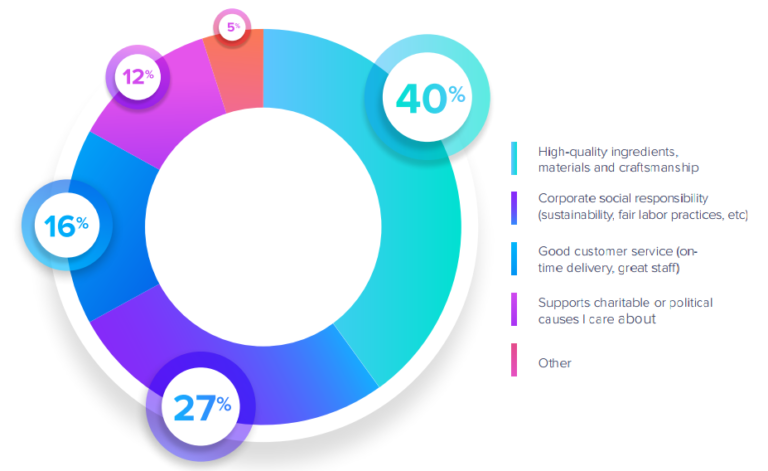 Author By Miva |
Author By Miva |- Posted on
- • March 12, 2021
- Advanced Ecommerce

In the rapidly-evolving ecommerce landscape, companies that prioritize business transformation and building a robust online presence will be the ones most prepared to thrive and stay relevant. Over the course of our 20+ years of working with online sellers, we have identified a 3-step sequence that many successful merchants have followed to strategically transform their operations and make their business more agile:
- Improve the user experience
- Upgrade systems
- Scale up marketing efforts
Regardless of your business size or industry vertical, following these best practices allows your business to bring in more customers and adapt to any situation.
If you’re seeing things break and encountering obstacles in your way as you grow, it’s time for your business to prioritize transformation. In this article, we detail step 1 of the aforementioned 3-step sequence and discuss where to start investing to catalyze revenue growth.
Why Start with the User Experience?
Start your digital business transformation where you generate topline revenue: your website. A positive website experience encourages shoppers to buy, refer your business to others, and come back to your website to buy more—all of which lead to more revenue for your business.
To improve your user experience, you’ll need to refine your website design, optimize your product presentation, maximize customer interactions, and stay ahead of shopper expectations.
1. Refine Your Website Design
The modern online shopper is savvy and selective–and they have other options. To be a competitive business, you need to be able to count on your website to deliver an accessible, seamless, and desirable shopping experience that hooks shoppers from the get-go.
With the average cart abandonment rate at almost 70 percent, you must be able to engage the shopper across the whole customer journey. One way to refine your user experience and keep shoppers moving through your site is by investing in the site design and overall presentation of your products. A strong website design attracts shoppers and gives them incentive to continue exploring your site. The following are some website elements to prioritize:
- Imagery and Graphics: Use high-quality imagery and consistent colors for to create a cohesive brand
- Hierarchy: Establish a clear visual hierarchy to direct users to important site sections
- Navigation: Ensure that site navigation is easy to follow, logical, and intuitive
- Trust Signals: Use security seals and customer reviews to create trust and confidence
- Product Categories: Use well-defined categories to aid in product search and discovery
On top of these best practices for website design, your website also needs to be mobile responsive. With so many shoppers browsing online stores with phones and tablets, all important elements on your website need to displayed easily for shoppers no matter which device they are on. This helps improve your search ranking, prevent customers from getting frustrated, and increase the time visitors spend on your site, which lead to more sales and revenue.
2. Improve Your Search Features and Product Presentation
Your website needs to help customers find what they need fast. Empower customers by implementing a faceted search feature that helps them identify what they’re looking for and guides them to the right destination. Key information like product attributes, pricing, customer reviews, and availability should also be front and center to provide full product visibility.
Next, you’ll want to prioritize your digital product merchandising. Strong product presentation removes any friction that customers may feel and encourages them to take further action on your website. Consider product visualizers, dynamic product images, and technology trends like augmented reality to give shoppers a complete understanding of your product.
3. Maximize Customer Interactions
While your website should be optimized to make sales, it’s important to consider other reasons visitors may have for coming to your site. Some might be window-shopping or looking for price comparisons. While these shoppers may not be ready to buy just yet, their experience on their site could make or break a potential future sale. This is why you want to leverage your site to deliver value and maximize the online experience. Make personalized product recommendations, upsell relevant products, offer educational content, and encourage customers to join your email list to stay connected.
The more positive and relevant your shopping experience is, the more customers will want to stick around on your site. This is important for driving that first purchase and for future purchases to come.
4. Stay Ahead of Customers’ Expectations
With your competitors just a Google search away, it is critical to innovate and keep your website on the cutting edge to meet your customers’ ever-changing needs. To do this, you need to introduce fresh, relevant content into your user experience.
A modern website should allow you to launch new pages, create new promotions, and implement quick additions to the customer-facing side without any delay. This level of flexibility is key to engaging customers, driving customer lifetime value, and increasing sales.
Stay tuned for Part 2: Upgrading Your Ecommerce Systems.

![[New Forrester Report] The 2021 Holiday Planning Guide](https://technobabble.com.au/thegatewaynetau/wp-content/uploads/sites/11/2021/08/new-forrester-report-the-2021-holiday-planning-guide.jpg)

